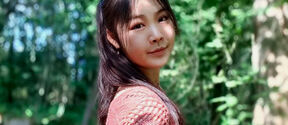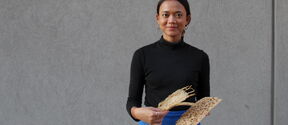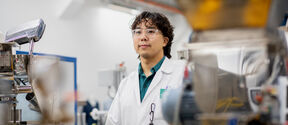Nature at the core of Aalto's campus plan

Alvar Aalto's plans for the Otaniemi campus area are a good example of how nature and the built environment can merge together, creating a harmonious and sustainable whole. In Aalto's vision, the campus's characteristic features were manicured lawns, groups of trees and individual trees, which, together with the history of the Otaniemi park, create a unique whole. According to Aalto's campus plan, these natural elements were to be preserved and clarified so that they could continue to function as aesthetic and ecological elements of the area.

Greenery and trees must be preserved
Aalto's long-term and sustainable thinking was reflected in his approach to preserving the trees on the campus. This principle was also the policy of the later Otaniemi administration, which agreed with the importance of preserving the trees. Special measures were even planned to protect the trees.
Many experts were used in the planning of the area's parks. In the late 1950s, a garden designer drew up a park plan for the area, which aimed to create a park forest. The plan already included maintenance measures for the campus forest and the design of possible walkways.
According to Elissa Aalto, a key idea in Alvar Aalto's design work was that greenery should not be artificially created, but that urban development should respect nature's own structure, topography and variations in light. Alvar Aalto believed that connecting the natural environment and buildings was an important part of modern urban planning, and that a symbolic approach could express the inseparable connection between humans and nature. In Aalto's designs, public spaces and the main transport connections were at the center of the approach to nature.
Alvar Aalto: Valtakuntamme suunnittelu ja kulttuurimme tavoitteet (1949).Luontohan on vapauden symboli. Joskus luonto on suorastaan vapauden käsitteen aiheuttaja, sen ylläpitäjä.
Ahead of his time, still relevant
Alvar Aalto's attitude towards nature was ahead of his time in many ways. For example, as early as 1930, he considered the ecological dimensions of urban planning and criticized the garden city ideas that were popular at the time, but which Aalto considered uneconomical. According to him, technical solutions could make the outdoors and nature part of every home. The goal was not to strictly separate the built environment from nature, but to create an urban area where the natural environment was an integral part of the living environment of its residents.
Aalto's view of the relationship between nature and urban planning was radical and still relevant. He did not consider taking nature into account merely as an aesthetic choice, but believed that it was an effective way to increase the artistry and functionality of an area. According to him, nature was a symbol of freedom and its integration into urban planning would help achieve a more harmonious and sustainable environment. Aalto was convinced that by basing technical plans on nature, society could create a better and freer living environment for everyone.
Sources:
Otaniemen keskeinen kampusalue, kulttuuriympäristöselvitys. Livady Oy & Maisema-arkkitehtuuri MM. (2014)
Otaniemen, Keilaniemen kaavarungon alueen rakennetun ympäristö miljöötyypitys. Espoon kaupunki. (2019)
Read more news

Future makers research batteries, cryptography and plastic recycling
The Technology Industries of Finland Centennial Foundation awarded 3.5 million euros in research funding to eight projects, five from Aalto University.
From award-winning food packaging to researching biodesign spaces
From an early age, Ena Naito was drawn to both the sciences and design. She found the perfect place to bring those two worlds together.
Architect and designer Talisa Dwiyani combines passion, materials, and collaboration in her work
Indonesia-born Talisa's takeaway from Aalto University is the cross-disciplinary way of working.






